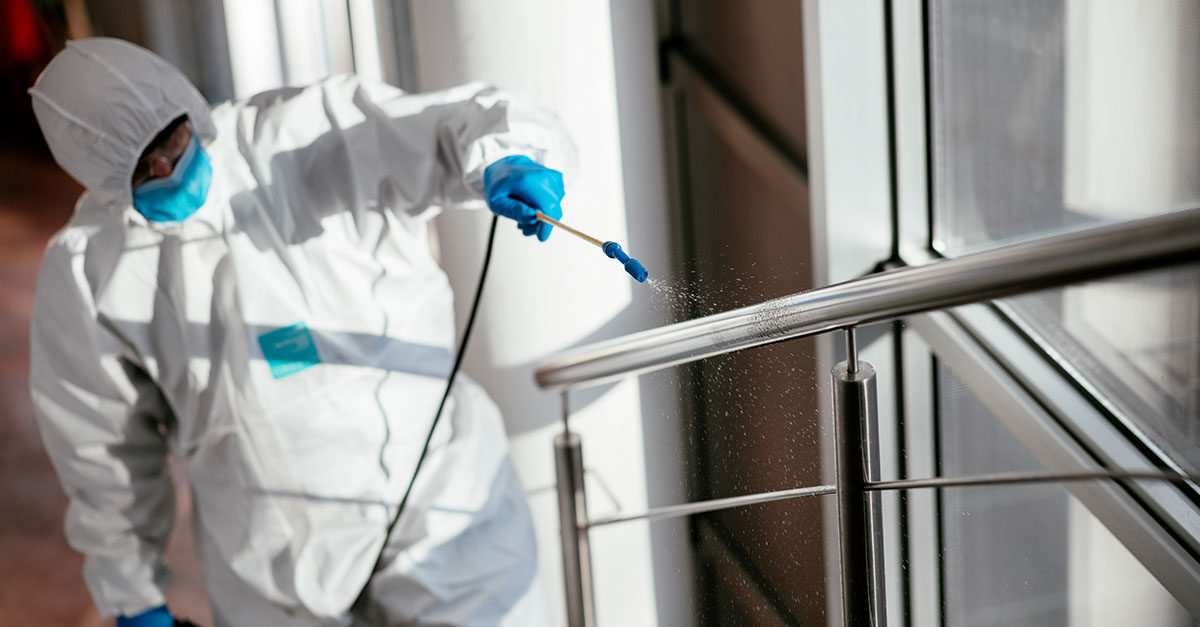On March 11, 2020, two days before the United States began widespread shutdowns in response to the COVID-19 pandemic, the Hong Kong University of Science and Technology (HKUST) made an important announcement related to cleaning and the world’s fight against the SARS-CoV-2 coronavirus. The university had developed an antimicrobial coating that, once applied to surfaces, is “effective in killing viruses, bacteria, and even hard-to-kill spores.”
This was already great news, but then it got even better: The coating is “highly versatile with an effective period of up to 90 days,” HKUST reported.
HKUST isn’t the only one breaking this barrier. Other organizations worldwide, both private and public, have developed antimicrobial disinfectants that they claim, when misted onto surfaces using an electrostatic sprayer, can inactivate viruses such as the novel coronavirus for as long as 90 days. These new technologies are often described as providing persistent and continuous protection of a surface, offering long-term prevention of germs and bacteria.
The advantage of long-lasting antimicrobials
The fact that these coatings can remain active for such a long period has several benefits for cleaning professionals and their customers. According to Mike Sawchuk, a Canadian cleaning consultant who heads Sawchuk Consulting, the following are some advantages of electrostatic sprayers and these long-lasting disinfectants.
Labor savings—They reduce work time, improving worker productivity significantly. “Just think how much work time is eliminated if surfaces, especially hard-to-reach surfaces, only need to be disinfected every 90 days instead of every night.”
Coverage—Electrostatic sprayers allow for better coverage of surfaces, providing far more coverage than is typically possible when disinfecting surfaces manually.
Cost savings—Although quality disinfectants tend to be more costly than traditional cleaning solutions, cleaning professionals may find themselves using less product with these systems. “Less chemical and less work time applying [disinfectants to surfaces] can be a significant cost savings for cleaning contractors and their customers.”
Sustainability—Using these systems may also be a sustainable choice. “Huge volumes of disinfectants have been shipped all over North America. By reducing the number of disinfectants needed, we reduce the number of containers needed, the packaging needed, transport of these products, as well as the greenhouse gases released by transport vehicles.”
Disinfectant resistance—Just as germs are becoming resistant to different antibiotics, pathogens are becoming resistant to certain disinfectants. “If we can reduce disinfectant use, this resistance can be minimized.”
Health and environmental concerns—Although Canada has green-certified disinfectants, the United States does not, nor does it recognize them. “Reducing the number of disinfectants used to fight coronavirus, whether green or not, can reduce cleaning’s impact on the user and the environment.”
Antimicrobial efficacy—Because more of these long-lasting disinfectants are coming to market, and with many indicating their efficacy and ability to remain active on applied surfaces for up to 90 days, cleaning professionals should understand how and why these products can remain effective for such a long time.
The difference between antimicrobial and antibacterial
According to Michael Wilson, vice president of marketing for AFFLINK, a distributor-membership organization that now markets these products and this technology, it is important to understand the difference between an antimicrobial and an antibacterial.
An antimicrobial, Wilson explains, is designed to kill many types of pathogens on surfaces, “while an antibacterial is engineered to kill specific types of bacteria. The product most often used with electrostatic sprayers to help stop the spread of COVID is an antimicrobial.”
Electrostatic sprayers can be used to apply disinfectants to all types of surfaces, from walls and floors to counters, chairs, and tables, as well as to materials such as fabrics and plastics. However, for the disinfectant to be effective, these surfaces must be cleaned before the disinfectant mist is applied.
“As the antimicrobial is released from the machine, a positive charge is applied to the mist, which allows the disinfectant to bond to negatively charged surfaces,” says Wilson. “The mist kills microbes on the surface very quickly and then inhibits the growth of pathogens for up to 90 days.”
On a microscopic level, the antimicrobial does this by creating layers of “nanospikes,” or tiny spears. As the antimicrobial attracts pathogens, Wilson explains, “these spikes pierce the pathogens, killing bacteria and inactivating viruses, mold, and fungi.”
This explains how the antimicrobial coating works but not why it inhibits pathogen growth for such a long period. This growth prevention is accomplished through a molecular process that relies on what is called a covalent bond between the surface and the chemical, says Wilson. Originally developed for manufacturing industries, these covalent coatings become one with the surface, providing long-term protection that doesn’t wash away even with regular, repeated cleaning.
Having a better idea of how these antimicrobials work and of the chemistry that helps them continue working for as long as 90 days is valuable. But the big takeaway here for cleaning professionals is that these are potentially some of the most effective weapons available to fight COVID-19.
Even after a COVID-19 vaccine is introduced and distributed, these antimicrobials will likely still be needed and may help us more effectively fight diseases, viruses, and other pathogens in the future.




